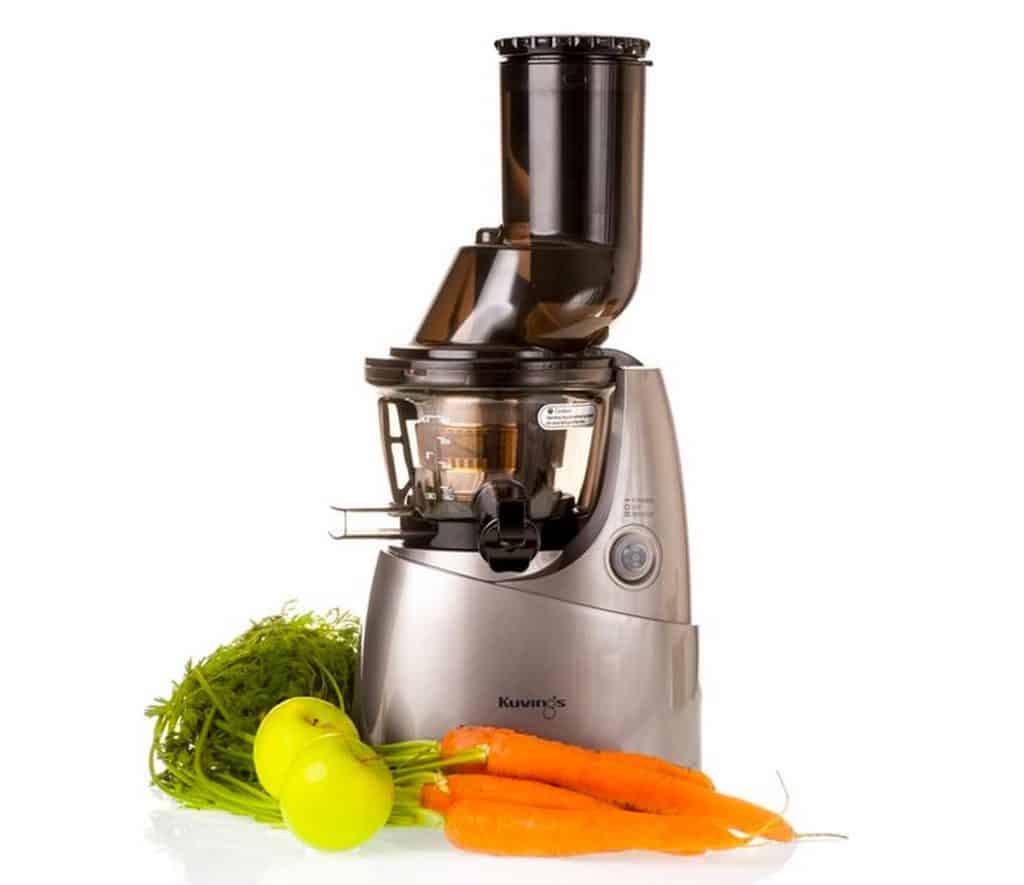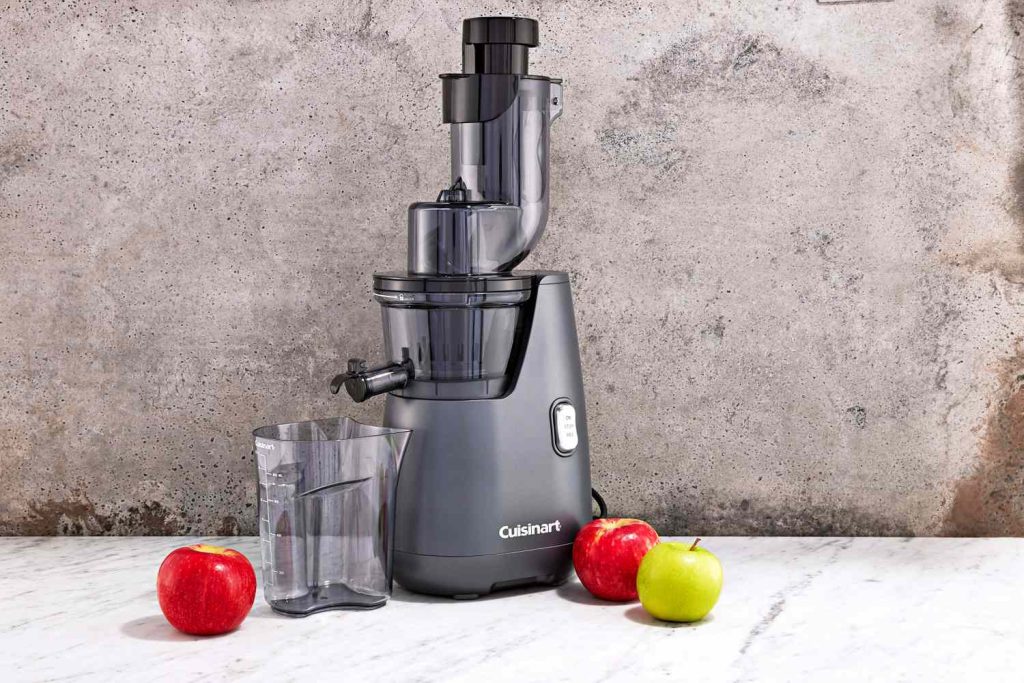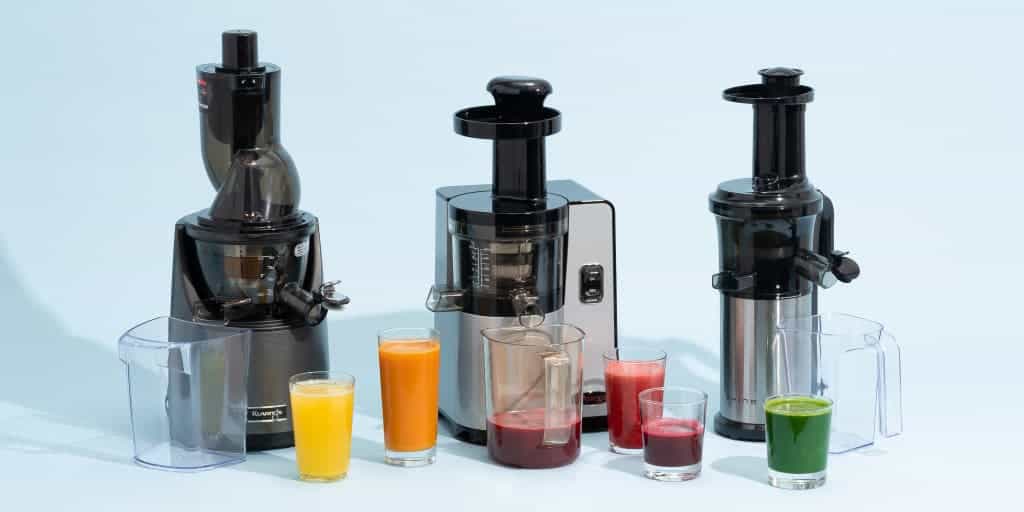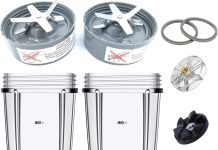Juicing enthusiasts have undoubtedly come across the term “slow juicer” on their quest for the perfect homemade juice. But what exactly does it mean and is it worth investing in one? In this article, we will explore the benefits of a slow juicer and whether it lives up to the hype. From extracting maximum nutrients to producing juice with a rich and smooth taste, we dive into the reasons why a slow juicer may just be the game-changer you’ve been looking for. So sit back, relax, and let’s juice our way through this article to find out if a slow juicer is truly worth it!
This image is property of ukjuicers.com.
Review contents
What is a Slow Juicer?
Definition
A slow juicer, also known as a masticating juicer or cold-press juicer, is a type of kitchen appliance that is designed to extract juice from fruits and vegetables at a slower speed compared to other juicers. Unlike centrifugal juicers, which use high-speed spinning blades to separate the juice from the pulp, slow juicers use an auger or gear mechanism to slowly crush and squeeze the produce, separating the juice from the pulp in a more gentle and efficient manner.
How it Works
Slow juicers operate on a simple yet effective principle. The auger or gear within the juicer slowly rotates and crushes the fruits and vegetables, releasing the juice and nutrients. The crushed produce is then pushed through a fine mesh screen, separating the juice from the pulp. This slow and gentle process helps to retain the maximum amount of nutrients, enzymes, and flavor in the juice, resulting in a higher-quality and more nutritious end product.
Benefits of Slow Juicing
Slow juicing offers several benefits that make it a popular choice among health-conscious individuals and juicing enthusiasts alike. Here are some key advantages of using a slow juicer:
-
Preserves Nutritional Value: The slow and gentle extraction process of a slow juicer helps to minimize heat and oxidation, which can degrade the nutritional content of the juice. By retaining more nutrients, enzymes, and antioxidants, slow juicing allows you to enjoy a healthier and more nutrient-dense beverage.
-
Produces Higher Juice Yield: Slow juicers are known for their efficiency in extracting juice from fruits and vegetables. The slow squeezing action effectively extracts every drop of juice from the produce, resulting in a higher juice yield compared to other juicers. This not only saves you money on buying additional produce but also reduces food waste.
-
Less Noise and Oxidation: Unlike centrifugal juicers, which can be noisy due to their high-speed operation, slow juicers operate at a lower speed, creating a quieter juicing experience. Additionally, the slower process reduces the level of oxidation in the juice, preventing rapid nutrient degradation and ensuring a longer shelf life.
-
More Versatile for Different Ingredients: Slow juicers are highly versatile and can handle a wide range of ingredients, from soft fruits and leafy greens to hard vegetables and nuts. The slow and powerful extraction process ensures that even tough ingredients are effectively juiced, allowing you to experiment with various recipes and create delicious and healthy concoctions.
Pros of Using a Slow Juicer
While slow juicers offer numerous benefits, it is important to consider the potential drawbacks as well. Here are some pros of using a slow juicer:
Preserves Nutritional Value
As mentioned earlier, slow juicers are designed to minimize heat and oxidation during the juicing process, resulting in juice that retains more nutrients, enzymes, and antioxidants. This preservation of nutritional value ensures that you are consuming the maximum amount of health benefits from your fruits and vegetables.
Produces Higher Juice Yield
One of the significant advantages of using a slow juicer is its ability to extract a higher yield of juice from a given amount of produce. The slow squeezing action effectively breaks down the fibers and extracts the maximum amount of liquid, resulting in a juicer that is more efficient and cost-effective in the long run.
Less Noise and Oxidation
Compared to centrifugal juicers, which can be quite noisy due to their high-speed spinning blades, slow juicers operate at a lower speed, producing significantly less noise. This makes them a great option for those who prefer a quiet juicing experience, especially in the early mornings or late evenings.
The slower extraction process of slow juicers also minimizes oxidation, as less air is introduced during juicing. This reduces the breakdown of nutrients and helps to preserve the freshness and quality of the juice for a longer period.
More Versatile for Different Ingredients
Slow juicers are incredibly versatile and can handle a wide variety of ingredients, including soft fruits, leafy greens, hard vegetables, and even nuts. The slow and powerful extraction process ensures that even the toughest ingredients are effectively juiced, allowing you to create a diverse range of juice recipes with ease.
Whether you prefer a simple green juice or a more complex nut milk, a slow juicer provides the flexibility to experiment with different ingredients and flavors, opening up a world of juicing possibilities.
Cons of Using a Slow Juicer
Despite its numerous advantages, using a slow juicer also comes with a few potential drawbacks. Here are some cons to consider:
Longer Juicing Time
One of the main downsides of using a slow juicer is the time it takes to extract the juice. The slow squeezing action and thorough extraction process can result in a longer juicing time compared to centrifugal juicers.
If you’re someone who values speed and convenience, and doesn’t have the luxury of spending too much time juicing, a slow juicer may not be the best option for you. However, many slow juicer enthusiasts argue that the extra time and effort are well worth it for the superior quality and nutritional value of the juice.
Higher Cost
Another factor to consider is the cost of a slow juicer. Compared to centrifugal juicers, which are generally more affordable, slow juicers tend to be more expensive. The intricate mechanisms and advanced technology used in slow juicers contribute to their higher price tag.
If you have a limited budget or are not sure if you’ll be using a slow juicer frequently, it may be more prudent to opt for a more affordable juicing option. However, if you are committed to juicing and prioritize the quality of your juice, the investment in a slow juicer can be justified in the long run.
Requires More Preparation
To get the best results with a slow juicer, some additional preparation is often required. This may include chopping fruits and vegetables into smaller pieces, removing any seeds or pits, and carefully feeding the produce into the juicer at a controlled pace.
While this extra effort ensures a smoother juicing process, it can be time-consuming, especially if you are juicing in large quantities. If you prefer a more straightforward and hassle-free juicing experience, a slow juicer may not be the most convenient option for you.
Limited Juice Shelf Life
Due to the absence of preservatives and the minimal oxidation that occurs during the slow juicing process, juices extracted from a slow juicer tend to have a shorter shelf life compared to commercially processed juices. Slow juiced juices are best consumed immediately to ensure optimal freshness and nutrition.
If you prefer to make larger batches of juice to consume throughout the day or week, it can be a challenge with a slow juicer. However, some slow juicers come with additional features, such as vacuum sealing, to extend the shelf life of the juice. It’s important to consider your juicing habits and consumption needs before making a decision.
Factors to Consider
When deciding whether to invest in a slow juicer, there are several factors to consider. Here are some key considerations that can help guide your decision-making process:
Budget and Affordability
The cost of a slow juicer can vary significantly depending on the brand, model, and additional features. Before making a purchase, it’s important to assess your budget and determine how much you are willing to invest in a juicer. Consider the long-term value and potential savings on store-bought juices and weigh it against your financial situation.
Time and Convenience
As discussed earlier, slow juicers require more time and effort in terms of preparation and juicing. If you have a busy schedule and prefer speed and convenience, a slow juicer may not align with your lifestyle. However, if you enjoy the process of juicing, have the time to spare, and prioritize the quality of your juice, a slow juicer can be a worthwhile addition to your kitchen.
Types of Ingredients
Consider the types of ingredients you are most likely to juice. If you primarily juice soft fruits and leafy greens, a slow juicer is a great option as it can effectively extract the maximum amount of juice and nutrients from these ingredients. However, if you mainly juice hard vegetables or nuts, you may want to opt for a slow juicer with more powerful extraction capabilities.
Health Benefits Priority
If maximizing the nutritional value of your juice is a top priority, a slow juicer is an excellent choice. The gentle extraction process helps to retain more nutrients, enzymes, and antioxidants, resulting in a healthier beverage. On the other hand, if you are primarily focused on convenience and variety, other types of juicers or blenders may better suit your needs.
Kitchen Space and Storage
Consider the available space in your kitchen and the storage requirements of a slow juicer. While some models are compact and easy to store, others may require more counter space or cabinet storage. Evaluate whether you have sufficient space to accommodate the juicer and its accessories before making a decision.
This image is property of cdn.mos.cms.futurecdn.net.
Comparing Slow Juicers to Other Types
To fully understand the benefits and drawbacks of using a slow juicer, it’s important to compare it to other types of juicers available in the market. Here’s a brief comparison of slow juicers to other common juicer types:
Centrifugal Juicers
Centrifugal juicers are the most common and widely available type of juicer. They operate at high speeds, using sharp blades to extract juice from fruits and vegetables. While centrifugal juicers are generally faster in terms of juicing time, they tend to generate more heat and introduce more air into the juice, resulting in quicker nutrient degradation. Centrifugal juicers are also less effective in extracting juice from leafy greens and tend to produce a lower juice yield compared to slow juicers.
Masticating Juicers
Masticating juicers, also known as slow juicers or cold-press juicers, operate at a slower speed compared to centrifugal juicers. They use an auger or gear mechanism to gradually crush and squeeze the produce, separating the juice from the pulp. Masticating juicers are highly efficient in extracting juice, especially from leafy greens and harder vegetables. They also preserve more nutrients and have a longer shelf life compared to centrifugal juicers. However, masticating juicers tend to be more expensive and require more preparation time.
Blenders
Blenders, while not strictly juicers, can also be used to create nutritious beverages. Blenders typically blend the entire fruits and vegetables, including the fiber, resulting in a thicker and more filling drink known as a smoothie. While blenders retain the fiber and additional nutrients from the produce, they don’t extract the juice in the same way as juicers. Blenders can be a more versatile option for those who prefer smoothies or want to include whole ingredients in their drinks. However, if you prefer the taste and texture of pure juice, a slow juicer may be the better choice.
Citrus Juicers
As the name suggests, citrus juicers are specifically designed to extract juice from citrus fruits such as oranges, lemons, and grapefruits. These juicers utilize a reamer or cone-shaped attachment to extract the juice from the citrus fruit, leaving behind the pulp and seeds. While they are excellent for juicing citrus fruits, they are not suitable for other types of produce. If you primarily juice citrus fruits and don’t require the versatility of a slow juicer, a citrus juicer can be a more compact and cost-effective choice.
Finding the Right Slow Juicer
Now that you understand the benefits, drawbacks, and comparisons of slow juicers, it’s time to find the right one for you. Here are some steps to guide you in the selection process:
Researching Different Brands and Models
Start by researching different brands and models of slow juicers available in the market. Consider factors such as quality, reliability, customer reviews, and additional features. Look for brands that have a good reputation and offer reliable customer support.
Reading Customer Reviews
Customer reviews provide valuable insights into the performance and durability of the slow juicers. Look for reviews from customers who have similar juicing needs and preferences as you. Pay attention to any common complaints or issues mentioned by multiple users.
Considering Warranty and Customer Support
Check the warranty offered by the manufacturer. A longer warranty period indicates the manufacturer’s confidence in the product’s quality and durability. Additionally, investigate the availability and reliability of customer support. This can be crucial if you encounter any issues with your juicer or require assistance.
Comparing Prices and Features
Compare the prices and features of different slow juicers that meet your requirements. Consider the specific features and functionalities that are important to you, such as power, noise level, size, ease of cleaning, and additional attachments. Evaluate whether the price aligns with the overall value and benefits the juicer offers.
This image is property of www.foodandwine.com.
Tips for Using a Slow Juicer
Once you have chosen and purchased the right slow juicer for your needs, here are some tips to help you make the most out of your juicing experience:
Prepare Ingredients Properly
To ensure optimal juicing results, it’s important to properly prepare your ingredients. Remove any seeds, pits, or tough skin. Chop larger fruits and vegetables into smaller pieces to fit into the juicer’s feeding chute more easily. Remember to wash all produce thoroughly to remove any dirt or residues.
Alternate Between Different Types of Produce
To prevent clogging and maximize the efficiency of your slow juicer, alternate between different types of produce. For example, follow a leafy green with a firmer vegetable or a soft fruit with a harder vegetable. This helps to ensure that the juicer can effectively extract juice from each type of ingredient while preventing excess pulp buildup.
Clean the Juicer Thoroughly
Cleaning your slow juicer after each use is crucial to keep it in optimal condition and prevent the buildup of residue or bacteria. Disassemble the juicer and wash each component with warm soapy water. Use a brush or sponge to remove any stubborn pulp or fiber. Allow all parts to air dry completely before reassembling.
Store Juice Properly
If you are unable to consume the juice immediately, it’s important to store it properly to maintain its freshness and nutritional value. Transfer the juice to an airtight glass container and refrigerate it. Ideally, consume the juice within 24 to 48 hours to ensure optimal taste and quality. Avoid leaving juice exposed to air or light for extended periods, as this can accelerate nutrient degradation.
Recipes and Inspiration for Slow Juicing
Now that you have your slow juicer and the know-how, it’s time to explore the world of slow juicing recipes. Here are some popular and refreshing recipes to inspire your juicing journey:
Green Juice Recipes
- Classic Green Juice: Blend together a handful of spinach, kale, cucumber, green apple, lemon, and ginger for a vibrant and alkalizing green juice.
- Tropical Green Juice: Mix pineapple, spinach, mint leaves, lime, and coconut water for a refreshing tropical twist to your green juice.
Detox Juice Recipes
- Beet Detox Juice: Combine beets, carrot, cucumber, celery, lemon, and a small piece of ginger for a detoxifying and energizing juice.
- Green Detox Juice: Blend together kale, parsley, cucumber, lemon, green apple, and celery for a cleansing and rejuvenating juice.
Citrus Juice Recipes
- Orange Carrot Juice: Juice oranges, carrots, and a small piece of turmeric for a zesty and immune-boosting drink.
- Grapefruit Mint Juice: Extract juice from grapefruits and add a few sprigs of fresh mint for a refreshing and tangy citrus beverage.
Smoothie Recipes
- Berry Blast Smoothie: Blend together mixed berries, banana, almond milk, spinach, and a spoonful of almond butter for a delicious and nutrient-packed smoothie.
- Mango Avocado Smoothie: Combine ripe mango, avocado, coconut water, lime juice, and a handful of fresh spinach for a creamy and tropical smoothie.
This image is property of cdn.thewirecutter.com.
Conclusion
So, is it worth getting a slow juicer? The answer ultimately depends on your personal preferences, needs, and priorities. Slow juicers offer numerous benefits such as preserving the nutritional value of the juice, producing a higher juice yield, and being more versatile with different ingredients. However, they also come with some drawbacks, including longer juicing time, higher cost, more preparation requirements, and limited juice shelf life.
Before making a decision, consider factors such as your budget, time availability, types of ingredients you will be juicing, priority on health benefits, and kitchen space. Compare different juicer types, read customer reviews, and consider warranty and customer support. Ultimately, make an informed decision that aligns with your juicing goals and lifestyle.
Remember to use your slow juicer responsibly and follow safe juicing practices. Properly prepare your ingredients, alternate between different produce for optimal juicing, clean the juicer thoroughly after each use, and store the juice properly to maintain its freshness.
With the right slow juicer and a touch of creativity, you can enjoy a wide variety of delicious and nutritious juice recipes. So, go ahead, unleash your inner mixologist, and start your slow juicing journey to a healthier and more vibrant lifestyle!





































